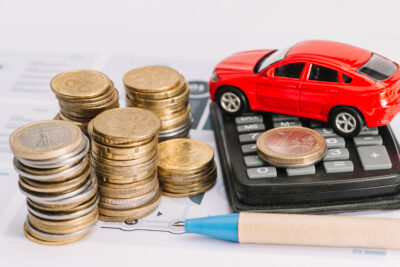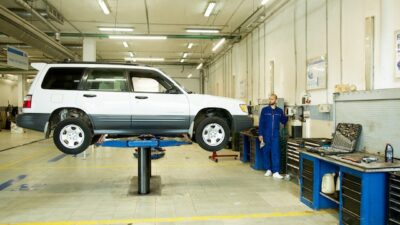Cars are one of the most valuable machines in existence. They give you the power of freedom, allowing you the ability to travel anywhere you want at the drop of the hat–becoming the setting for many of life’s big adventures. If you’re someone who is especially fascinated by cars, then you might wonder how they’re made. In this article, we’ll cover the process of how your car is made from start to finish, helping you understand exactly what carmakers went through to give you the car that you love.
Creating Pieces for the Body
The very first step of your car’s journey begins on a conveyer belt. Robots roll out large sheets of plastic and metal, typically aluminum, and then proceed to stamp the sheets into different pieces that will be used to build your car, including the roof, the hood, the truck, and parts of the frame. Smaller pieces will be cut out during this process as well, like your car’s mirrors and door components. In total, nearly 500 pieces will be stamped out before your car is ready to move on to the next step.
Assembling the Body
Once all of the pieces are prepared, it’s time to put them together to form the body of your car. As your car moves down the conveyer belt, it is assembled piece by piece. During this process, the pieces will typically be attached through welding or heat staking. This bond is guaranteed to be extra secure if manufacturers opt for heat staking plastics with bdtronic. This practice combines the use of heat and pressure to join two dissimilar materials together. Once the body of your car is fully assembled, it will be sent down the assembly line to be painted.
Painting and Polishing
While painting is an exciting part of the process, it can’t be done until your car is fully primed. A layer of primer can help to better protect your car against corrosion and wear from the elements. Additionally, it provides a smoother and much more even surface and makes it easier for the paint to stick. Once the primer is fully applied, it’s time to begin painting. To ensure a nice, even paint job, robotic arms are used to spray the entirety of your car. All in all, this process takes about five coats and 100 pounds of paint. Once your car is dry, it will be put under a bright light and polished, this way any scratches or inconsistencies will be visible and can be easily buffed out.
Adding Mechanical Elements
Next comes the most important step–adding all of the pieces that make the car run. The first step in this process will be to lift your car. Then, from underneath, the engine will be raised into it and mounted into place. Then, the gearbox will be added along with the drive shaft and the suspension of the car. Then, the wheels and braking system will be installed along with your car’s exhaust system and muffler. Once all of these pieces have been installed, your car will be lowered and the rest of the engine components will be added piece by piece, including things like the air filter, the generator, the fuel filter, and the battery.
The Interior
As the mechanical elements of your car are being installed, robots will be working on pieces for the interior of your car, using lasers to cut out patterns for the seats as well as any other leather or fabric interior accents like the center console and steering wheel. These pieces are all then sewn together and stuffed before being carefully added to your car. The first interior pieces to be added with be all of the electronic elements like the speakers, the infotainment system, and your gauges. The last components to be added will be your seats, steering wheel, and airbags, followed by your front and rear windshields and the doors of your car. The doors and windshields have to go on last so there is enough accessibility to allow for the interior of the car to be built easily.
Post-Assembly
Your car’s journey isn’t over once it’s finished being built. Once coming off of the assembly line, the body of your car undergoes a serious inspection to ensure that there are no new scratches or other blemishes that came as a result of the building process. Next, your car will be put through a simulator meant to mimic a rainstorm. This test is necessary to ensure that your car is watertight. After that, it will go through another simulator to determine how well it drives on the road, testing both its acceleration and braking capabilities. And finally, if it passes both of these tests, then your car will be ready to come home with you.










